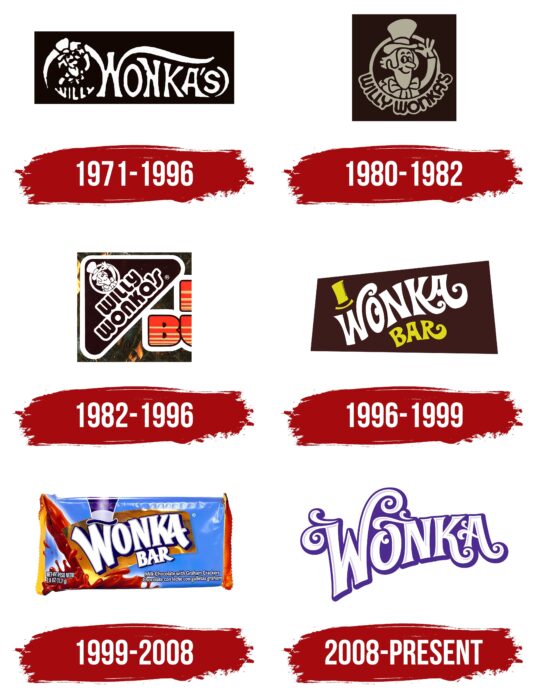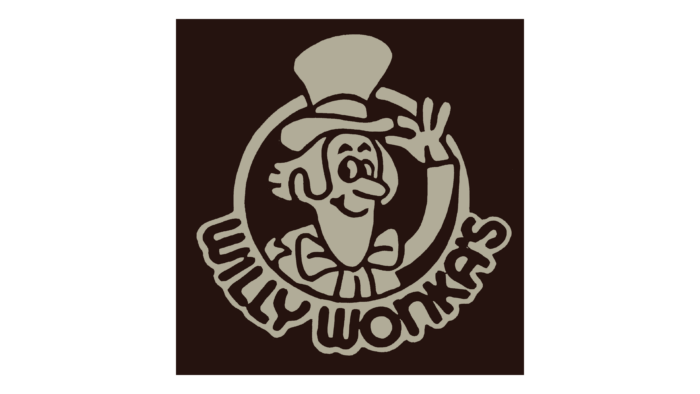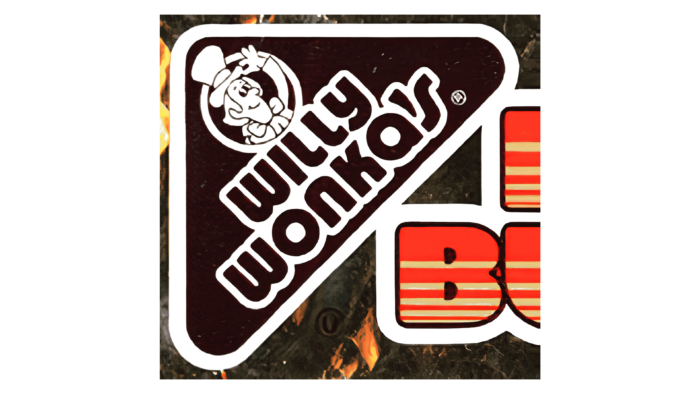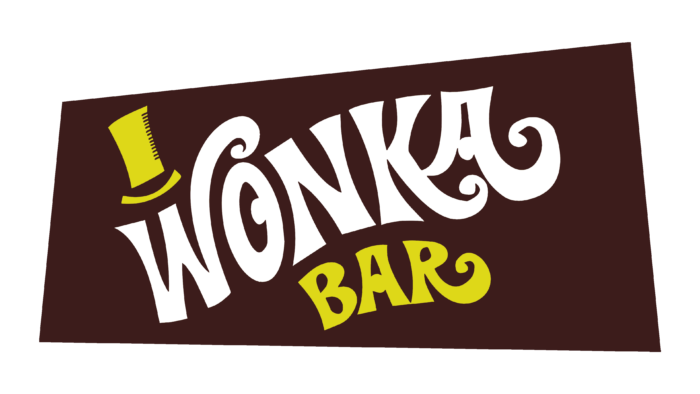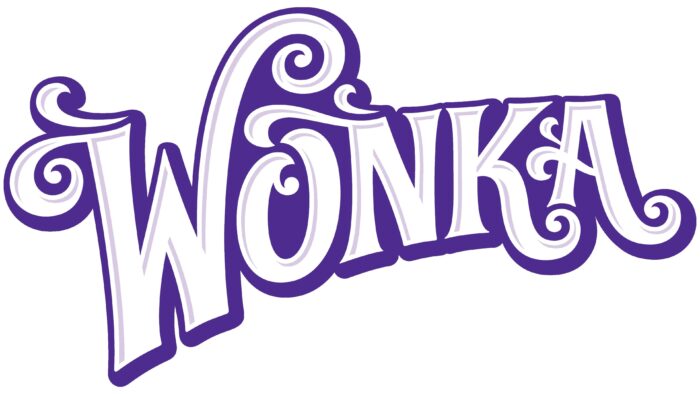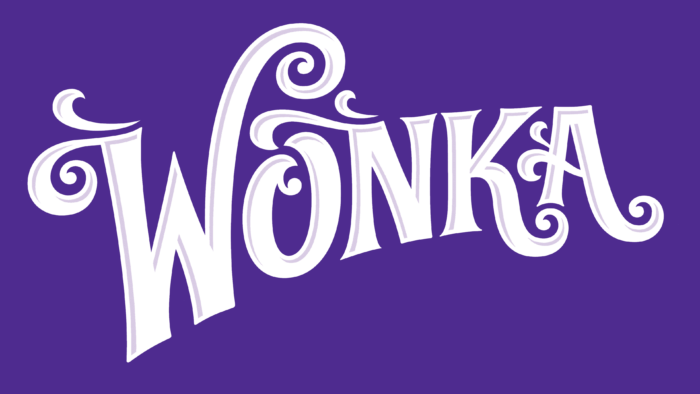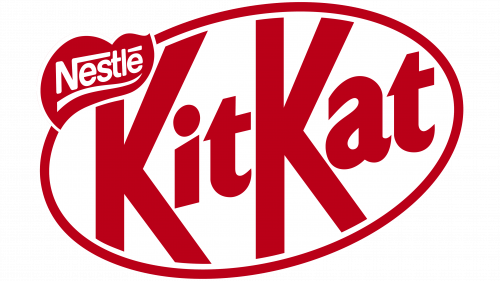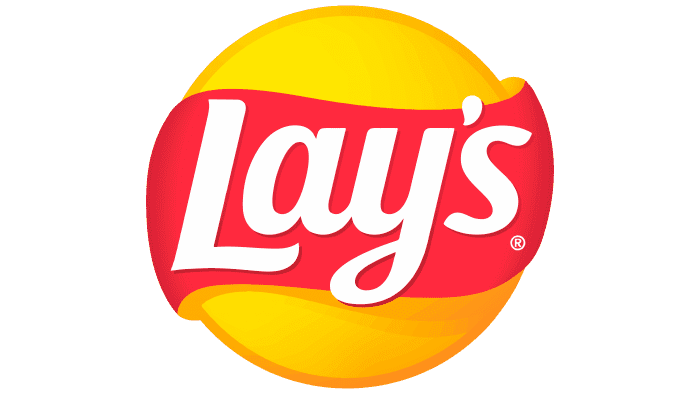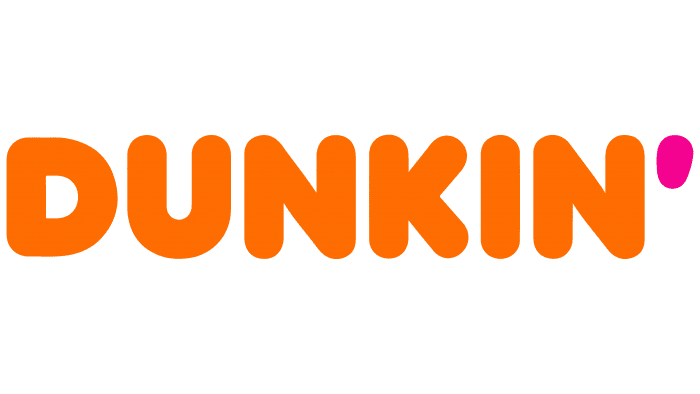The Wonka logo is very sweet to attract buyers’ attention. Elements of the sign, like hardening caramel, make one want to bite off a piece urgently. The emblem conveys a special, unforgettable taste of the bar.
Wonka: Brand overview
Wonka is the name of the original chocolate bars with cinematic origins. They appeared several times in R. Dahl’s famous novel. Dahl’s famous novel is about an eccentric chocolatier and his young assistant who wanted to learn the confectioner’s trade. The creation is known as Charlie and the Chocolate Factory. Inspired by the screen version of the novel, the famous company Quaker Oats decided to make the fictional sweetness real. Confectionery products received the appropriate design. It was a bright, colorful design with elements reminiscent of the legendary film. The style changed many times, but each new version did not deviate from the original concept.
The story began in 1964, when Dahl published Charlie and the Chocolate Factory. The book follows young Charlie Bucket as he explores Willy Wonka’s chocolate factory, which is filled with imaginative sweets and inventions like chocolate rivers.
In 1971, the story was adapted into the film “Willy Wonka & the Chocolate Factory” with Gene Wilder. This film brought the book’s magical elements to life and helped promote a line of Wonka-branded chocolate bars, blending fiction with the real world.
Dahl continued the adventure in 1972 with “Charlie and the Great Glass Elevator,” which introduced more creative inventions and sweets.
The 1980s marked the launch of actual Wonka products by Breaker Confections, later acquired by Nestle. They released items such as the Wonka Bar and the Everlasting Gobstopper, promising fun and adventure through their packaging.
In 2005, Tim Burton’s adaptation of Charlie and the Chocolate Factory, starring Johnny Depp, rejuvenated the brand, making it popular again among a new generation. This film was successful and maintained the brand’s magical image.
Despite market challenges and changes in consumer preferences from the 2010s onwards, Wonka continued to inspire nostalgia and wonder.
Wonka’s journey from a literary concept to a beloved brand showcases the power of storytelling. It combines Dahl’s imaginative stories with real products, allowing consumers to experience the magic. The brand remains a symbol of creativity and the endless possibilities of imagination.
Meaning and History
Wonka Bar compares favorably with other sweets. The main reason is the special story behind its appearance, associated with fairy tale characters. The candy bar became the real embodiment of a fictional product at the center of the plot of a fascinating children’s novel. Moreover, its production was launched about the same time the movie based on the famous creation was released.
A new kind of chocolate quickly became popular, so the company began large-scale production of candy with magical overtones. Throughout its existence, the candy bar was produced in different wrappers. Almost all of them had a bright color scheme, the original font associated with magic, and elements from the movie. Such a product was instantly recognizable in the shop window.
What is Wonka?
Wonka is the short name for the Willy Wonka Candy Company, owned by the Swiss multinational corporation Nestlé. The factory where the sweets are made is located in Itasca, Illinois. The first candies under the famous brand began to appear in 1971 – the same year that the film was made based on the book Charlie and the Chocolate Factory. Their wrappers featured the logo with a bold color scheme.
1971 – 1996
The first emblem of Willy Wonka chocolate, introduced in 1971 and used until 1996, captured the same uniqueness and originality as the eccentric chocolatier’s factory. The design reflected the magical and innovative approach to chocolate-making that Willy Wonka championed. The logo’s letters were styled to appear as if scattering in various directions, reminiscent of the factory’s bustling conveyor belts and circular lifts, suggesting a continuous flow of creativity in chocolate production.
A cozy window scene at the logo’s center featured Willy Wonka tipping his hat in greeting. This personalized and welcoming touch promised customers that each chocolate was crafted with special imagination and care, offering something amazing and unique.
The logo’s black-and-white design enhanced the theme of surprise and unpredictability associated with Willy Wonka’s factory. This color choice made the emblem more mysterious and intriguing, sparking consumer curiosity about the secrets hidden behind each chocolate wrapper.
1980 – 1982
The Willy Wonka chocolate logo uses brown and beige colors that resemble chocolate. These colors match the product and highlight its natural quality. They remind customers of real cocoa and the ingredients used in the chocolates, which helps build trust in the product.
The logo keeps the factory window design where a chocolatier greets customers, showing the brand’s friendly and open nature. The chocolatier is drawn in a modern, animated style in this version. While he doesn’t look much like the original Willy Wonka from Roald Dahl’s book, this helps make the logo flexible for use across different media and products, making it widely recognizable.
The chocolatier’s image on each product package promises quality and taste. It assures customers that every piece of Willy Wonka chocolate will be a delightful experience for children and adults. This commitment reinforces customer trust and highlights the brand’s dedication to chocolate-making excellence.
1982 – 1996
The latest Willy Wonka chocolate logo features a scene from “Charlie and the Chocolate Factory” where Charlie finds the golden ticket. This ticket symbolizes the chance to meet Willy Wonka, the innovative chocolatier. The emblem captures the thrill and hope of discovering the golden ticket in a chocolate bar, making each customer feel a personal connection to the adventure.
The emblem prominently displays the golden ticket with an image of Willy Wonka, symbolizing an exciting adventure and a unique chocolate experience. Willy Wonka’s bold signature under his image reinforces that each chocolate bar is made with personal care and oversight.
A white outline around the golden corner and Wonka’s image make the emblem stand out on the packaging and highlight the originality and creativity that Willy Wonka brings to his chocolate creations. This design suggests innovation and creativity are central to the Willy Wonka brand.
1996 – 1999
The new candy brand was presented a month before the release of the screen version of the novel. Quaker Oats introduced Wonka Bar candy to the market in the spring of 1971, working with two manufacturers: Chocolate Factory and Willy Wonka. A little later, viewers got a chance to watch an interesting movie in which the tasty bar repeatedly appeared. It was a marketing ploy, providing the brand with good profits.
The first candy bars had a stylish thematic design. The following elements can be seen on the wrappers:
- A large Wonka Bar inscription;
- a dark background;
- It’s an impressive hat.
The last part was associated with the movie’s main character, the chocolatier Willy Wonka. This style emphasized the fairy tale format, evidenced by the magician’s hat, the unusual typeface, and the distinctive color scheme. The letters had artistic curves, and each had a unique design.
As for colors, the designers used shades of gold, red, and basic white. The hat and the word Bar had a golden hue, and white was used to decorate the word Wonka. Using such colors created a contrast effect and attracted customers’ attention.
1999 – 2008
During this period, the brand was owned by one of the world’s biggest corporations, Nestlé. It turned Wonka into an umbrella brand; as a result, other sweets began to be sold under this name. This list included Laffy Taffy, SweeTARTS, etc. In connection with this, a rebranding was carried out. The new visual concept differed significantly from the original version.
The wrapper changed color, the font became more complex, and the overall picture was updated with new elements. But, at the same time, the traditional brand icon of a magician’s hat was preserved in the updated packaging. It was made in blue and moved to the center of the letter W. The twisted ends were removed from the font, while the magical style was retained.
The coloring was updated with blue and brown. The first was used as a background, and the second was used to design the new element – chocolate drops. The word Bar changed its golden hue to a basic white. The updated design proves that the company strives to develop and constantly improve its products. In addition, the new design became brighter, more positive, and more understandable to children. And they were the main target audience.
After some time, Nestlé released a new line of bars, “Wonka Exceptionals.” However, the company did not stop with this, and several more flavors appeared in the future. The concept of the iconic during this period changed again. Management decided to change the color palette and design in general.
The basis was taken from the version that existed from 1996 to 2009. The luxurious purple color appeared on the package, harmoniously combined with gold, white and red shades. The font became simpler again and lost the fancy curls.
2008 – today
The updated Willy Wonka brand logo is filled with symbols that reflect the brand’s blend of legend and fantasy. It depicts a world where reality and imagination merge, bringing dreams to life with delicious, unique chocolates.
The logo’s lilac color, symbolizing dreams, talent, and Willy Wonka’s imaginative world, adds a magical and mysterious touch. It highlights the chocolates’ uniqueness and charm and suggests creativity and innovation, which make Wonka’s products stand out.
The logo features letters with splashes that evoke the idea of a wonderfully aromatic blend, greeting anyone who opens a Willy Wonka chocolate bar. These splashes represent each chocolate’s rich flavors and aromas, inviting consumers to a world of tastes.
A whimsical font with swirls adds playfulness and elegance to the logo. The swirls and curves enhance the sense of wonder and unpredictability, emphasizing the magical experience of trying Willy Wonka chocolate.
Font and Colors
The logo uses a unique, whimsical font custom-designed to capture the brand’s playful essence. This exclusive font ensures the brand stands out uniquely.
The letters are bold and artistically styled with elongated, curving lines that suggest creativity and imagination. Their vertical strokes are square at the base, lending stability and structure to the playful design.
Decorative swirls in the font reflect the fantastical and imaginative traits of the brand, enhancing its memorability and highlighting its commitment to creativity and individuality.
Wonka’s corporate style combined bright colors to create a single color scheme. This evoked pleasant associations with a warm fairy-tale atmosphere, especially appealing to children. The color scheme of purple and white is eye-catching, tying in with themes of magic and adventure. Purple, symbolizing mystery and luxury, supports the brand’s premium, enchanting image, while white contrasts sharply, ensuring the brand name pops and remains easily recognizable. This thoughtful design aims to spark a sense of wonder and delight, perfectly aligning with the brand’s identity.
FAQ
Why is the Wonka logo purple?
The Wonka logo is purple because purple has always been linked to royalty, luxury, and uniqueness. Long ago, making purple dye was hard and costly, so only rich or royal people could wear purple. Even in later times, such as when Queen Elizabeth I ruled England, laws were made saying only royal family members could wear purple. This kept the color linked with being exclusive and high-status.
Nowadays, companies choose purple for their logos and branding to show their products are luxurious and high-quality. For example, Cadbury uses purple to show its chocolate is premium. Wonka, a brand from Roald Dahl’s stories, uses purple for its logo and packages. This makes Wonka stand out as offering not just candy but a magical and luxurious experience. For Wonka, purple makes it look unique and full of imagination and connects it to a tradition of luxury and exclusivity, making customers feel they’re getting something special.
Who designed the Wonka logo?
Pentagram, a design firm, created the Wonka logo. This logo captures the magic and charm of Willy Wonka and his chocolate factory. Pentagram is known for its creative designs and branding. Their Wonka logo shows the fun, kindness, and endless creativity in Roald Dahl’s story.
When making the Wonka logo, Pentagram wanted to show what Willy Wonka is all about his cleverness, the wonder he brings, and the magical feel of his factory. The logo isn’t just for identifying the brand. It’s also a door to the imaginative world Wonka stands for. It reaches out to people who already know the story and those who have just met Wonka. The team at Pentagram thought deeply about the story’s themes and visuals while designing the logo. They looked at the amazing inventions, bright candy colors, and the factory’s dreamy vibe. The logo they came up with invites people into a world filled with creativity and kindness.
What does the logo symbolize, Wonka Logo?
The Wonka logo uses a unique font to show magic and the special way Wonka creates sweets, which seems like real magic, especially to kids. This magic captures everyone’s imagination, making the brand very appealing.
The letters in the Wonka logo are shaped unusually on purpose. They show how different and creative Willy Wonka is, like in Roald Dahl’s “Charlie and the Chocolate Factory.” Willy Wonka is known for being innovative and not following the usual candy-making methods. The logo’s design shows this uniqueness and creativity, making Wonka stand out to anyone who sees it.
What is the meaning of Wonka?
“Wonka” comes from Roald Dahl’s book “Charlie and the Chocolate Factory.” It’s the name of the character Willy Wonka, who owns a magical chocolate factory. The name has come to mean creativity, wonder, and everything extraordinary. Sometimes, it’s used to talk about something odd or meaningless, but mostly, it captures the creative and magical side of Willy Wonka’s world.
Wonka is also the name of a real candy company, the Willy Wonka Candy Company, inspired by Dahl’s book. The company’s logo and products try to bring out the magical feeling of the chocolate factory from the story. “Wonka” means a lot of things. It’s not just a character from a book but also a real brand that tries to add some magic and creativity to our lives. It reminds us of a world where anything can happen and encourages people to imagine and dream.
What happened to the Wonka brand?
The Wonka brand, known for its connection to Roald Dahl’s “Charlie and the Chocolate Factory,” has undergone big changes. The famous Wonka bars were stopped, and Nestlé, the company that made Wonka products, chose to change the brand’s direction. They started a new Nestlé Candy Shop brand, abandoning the playful and imaginative Wonka theme. The Wonka name is barely mentioned, just a small note above the Nestlé Candy Shop logo.
This change meant the end of the magical and creative Wonka world that many people loved. The Wonka brand’s spirit influenced Nestlé’s candy products until 2018, but the focus shifted to a more standard candy brand with the Nestlé Candy Shop. This was a big turn from the innovative and whimsical world Dahl created. Ending the Wonka bars and moving away from the Wonka branding was a significant change, moving from a world of imagination to a more typical candy brand identity.
Is a Wonka bar real?
Inspired by Roald Dahl’s “Charlie and the Chocolate Factory,” Wonka bars were once real chocolates you could buy. Starting in 1976, these chocolates leaped from the book’s pages to store shelves, exciting fans with the chance to taste the magic. In Dahl’s story, Wonka bars had golden tickets hidden in some of them, offering winners a tour of the enchanting Wonka Chocolate Factory.
Nestlé, the company making these chocolates, captured the book and movies’ imaginative spirit, creating different versions of Wonka bars over the years. But, all things come to an end, and so did the production of Wonka bars. Nestlé stopped making them and shifted away from the Wonka brand. This decision marked the end of being able to buy a piece of this magical world. Even though Wonka bars are no longer made, they hold a special place in the hearts of many, reminding us of the joy and wonder in Dahl’s story and the excitement of possibly finding a golden ticket.

